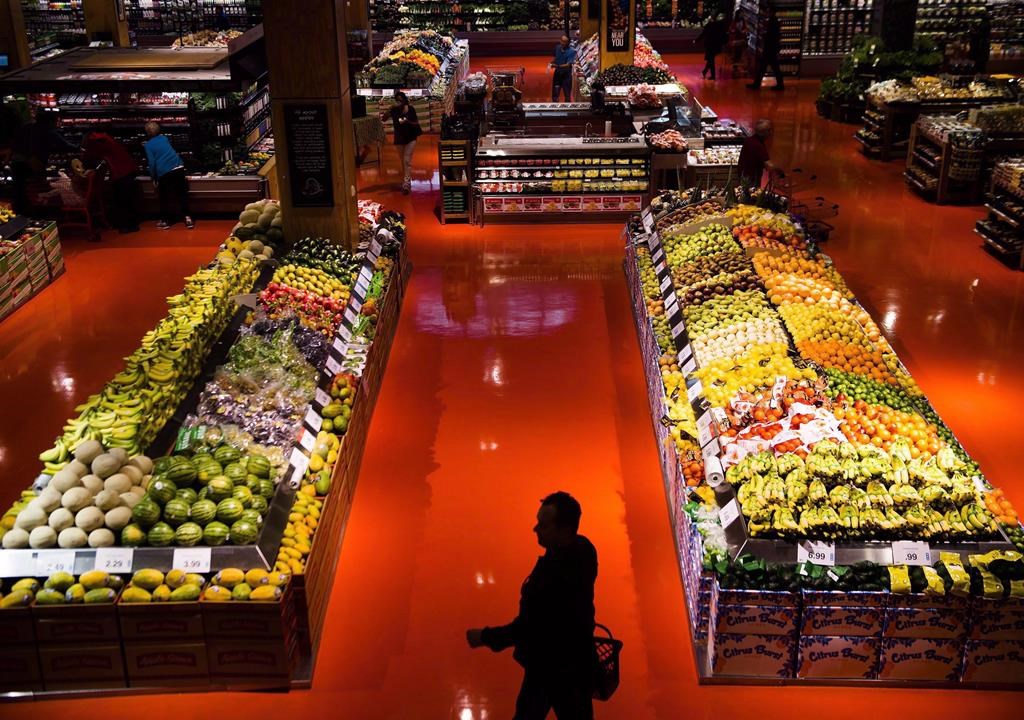MPs grill Canadian grocery chain CEOs about profits

Posted March 7, 2023 9:23 am.
Last Updated March 8, 2023 5:12 pm.
As the rate of inflation slowly eases, many, including federal MPs, want to know why big chain grocery stores are making so much money while many struggle to put food on the table.
In the House of Commons Wednesday, politicians questioned the CEOs and presidents of companies like Loblaw, Empire, and Metro as part of a parliamentary investigation into food prices.
Sylvain Charlebois, director of the Agri-Food Analytics Lab at Dalhousie University, says he has three questions he thinks Canadians deserve an answer to.
“One, how much profits are generated from food sales specifically? It’s hard to tell when you look at balance sheets. These companies actually make money selling cosmetics, prescription drugs, clothing, but it’s important I think for Canadians to know exactly how much profits are generated from food sales.”
He says the much-touted price freeze implemented over the winter and ended in January should be looked at under a microscope.
Related Articles:
-
Is it ‘greedflation’? Grocery CEOs to be forced to testify in Ottawa
-
Loblaw Companies reports $529M Q4 profit, revenue up nearly 10 per cent
-
Canadian inflation could be halved by end of year: report
“The blackout period that was publicized… from November to February, I find it very difficult how consumers gain from that blackout period when vendors are not allowed [to change] prices for three months. This means in October they will boost prices and in February, they boost prices again, and that’s what we’re seeing right now at the grocery store.
“I certainly want to hear from CEOs how this blackout period still remains, why do they need it, and does it lead to some collusion in the system,” explains Charlebois.
In January, Canada took one step closer to implementing a Grocery Code of Conduct which is aimed at increasing fairness and transparency of both producers and stores within the industry. Charlebois wants to know if the big bosses support it.
“It’s in the works right now and the idea of the code of conduct is to discipline supply chains — start with grocers — to disallow any bullying coming from grocers like Loblaw and Walmart. And I will certainly want to know whether CEOs are supportive of the code of conduct.”
Charlebois also wants the federal committee to look into the operational margins of grocery stores.
“Operational margins in Canada, when it comes to food distribution are double what they are in the U.S., which means the Canadian food distribution landscape is much less competitive. They are about 4.55 per cent compared to, say Kroger’s and Albertsons, which are actually about two per cent. So, it’s a bit cozy for grocers in Canada.”
Charlebois doesn’t think many Canadians understand the grocery store industry in this country and hopes this testimony will shed light on what’s really happening.
“I think the most thing for the committee to get is data. Data that we cannot normally get by looking at balancing sheets and things like that.”
As frustrated as Canadians are, he also wants people to understand the food crisis is challenging in other parts of the world as well, and this problem isn’t unique to Canada.
“I don’t think prices will drop. The food inflation rate will drop, and it is continuing to drop. When you look at Canada compared to other countries, we’re actually not doing too badly. We have the third lowest food inflation rate amongst G7 countries. This is a global phenomenon and people need to recognize that. I mean the same is going on in Europe and the U.S. as well.”
A report co-authored by Charlebois last fall found that Canada’s three biggest grocers all posted higher profits in the first half of 2022 compared with their average performances over the last five years.
Loblaw was particularly notable, the report found, as it had outperformed not only its five-year average performance but also that of each of those years individually. The grocery chain’s gross profit in the first half of 2022 beat its previous best results by $180 million — equivalent to about an extra $1 million a day, the research found.
And while Loblaw has said its profits have been driven by non-food items like its pharmacy products, its financial statements don’t break down the margins for different categories of goods.
On Monday, food producers told the federal committee, they are facing cost pressures and that’s why prices are so high. Pointing out that over the past year it’s become so much more expensive for things like labour, energy, and even packaging.
-With files from CityNews Halifax 95.7 FM and The Canadian Press








